Tech Neck does more than strain your neck. It affects breathing and increases stress load in nervous system. Discover strategies how to restore energy, focus, and nervous system balance with science-based breathing.
Do You Feel Drained After Screen Time?
What if your screen habits are silently draining your energy, disturbing your mood, and hijacking your ability to focus? The hidden culprit may not just be your posture. Your breathing may be the root cause.
How Tech Neck Impacts Breathing and Stress
Looking down to read, text, write, or scroll triggers shallow, rapid, chest-dominant breathing, which causes CO2 depletion. This creates a stress response in your nervous system and affects:
- Energy and stamina
- Emotional balance
- Focus and memory
- Muscle tension
- Sleep quality
- Oxygen delivery to the brain
Symptoms Linked to Forward Head Posture and Breathing Dysfunction
“Read more about how CO2 affects nervous system health.”
When posture and breathing fall out of sync, the effects ripple across your health:
- Chronic neck and jaw tension
- Brain fog or disorientation
- Unexplained fatigue
- Restlessness or anxiety
- Irritability and mood swings
- Vision strain or light sensitivity
- Poor posture awareness
- Reduced oxygenation and blood flow
- Depression-like symptoms
Surprisingly, these symptoms are rarely traced back to something as simple as breath and CO2 balance.
Breathing Strategies to Offset Tech Neck
In today’s need for technology and electronic devices, looking down with a forward neck is unavoidable. Try the following breathing strategies the next time you are scrolling or working on your laptop.
STRATEGIES
1. Bypass the chest as you breathe in.
This will allow you to minimize the effect of faulty muscle recruitment and tension around your neck, jaw, head, and upper back.
2. Slow down your exhalation.
Allow your exhale to be soft, passive, and slightly longer than your inhale. This calms the nervous system and resets your stress response.
3. Allow transition time between breaths
Allow a natural pause after each exhale. This increases breathing efficiency and prevents rapid, shallow cycling.
4. Relax your shoulder muscles
Check in with your posture. Tension in the shoulders, jaw, or neck often builds unconsciously when you’re staring at a screen.
5. Change positions.
Lift your chin slightly and consciously relax your neck. Changing positions frequently can prevent long-term strain.
What To Aim For
GOAL 1:
Become aware of patterns that create prolonged strain and potential cervical spine degeneration.
GOAL 2:
Maintain a rhythmic, adaptive breathing and optimal CO2 levels even in a compromised posture.
New Paradigm:
- Breath With CO2 Balance To Rewire Your Physiology
- Traditional advice says good posture leads to good breathing. But here’s the truth:
- When you master adaptive breathing, your body stays balanced regardless of posture, context, or stress levels.
Conclusion:
Posture isn’t just about your spine. it’s also about how your breathing affects your physiology.
By simply adjusting how you breathe while using your devices, you can calm your stress response and restore mental clarity and physical energy.
Undoing breathing behaviors can require a dedicated CO2 breathing therapy, one that provides clear guidance, and support to create permanent results.
Respiras supports resilience, performance, and true healing. Contact us to see if our program is a good fit for you.













